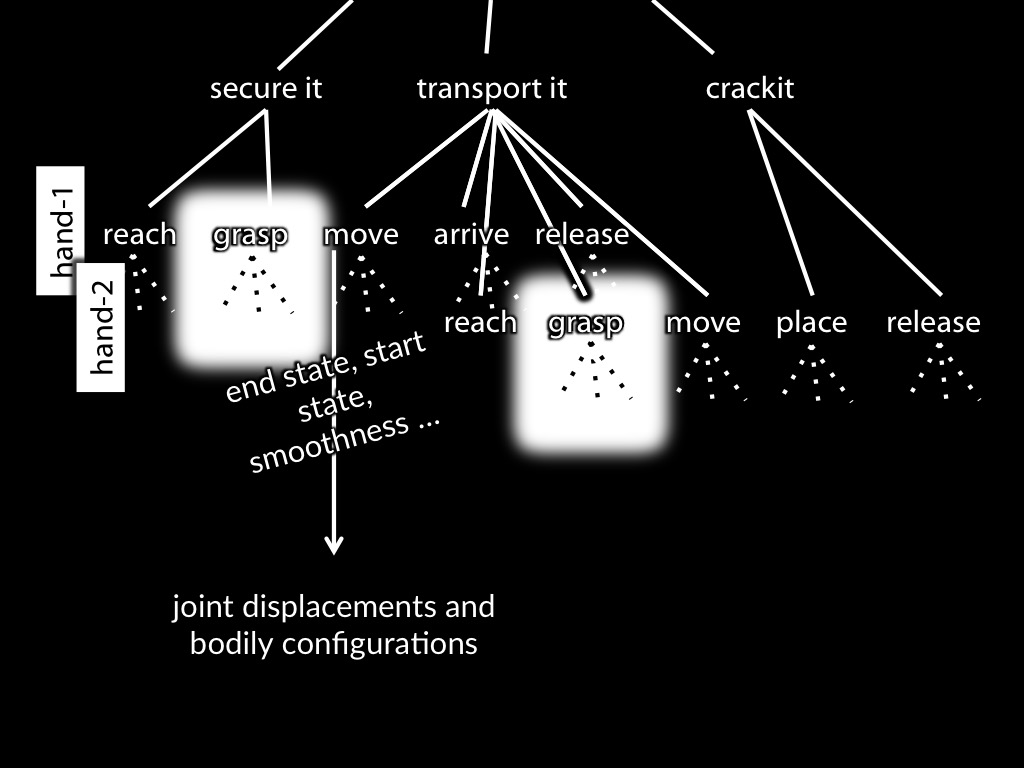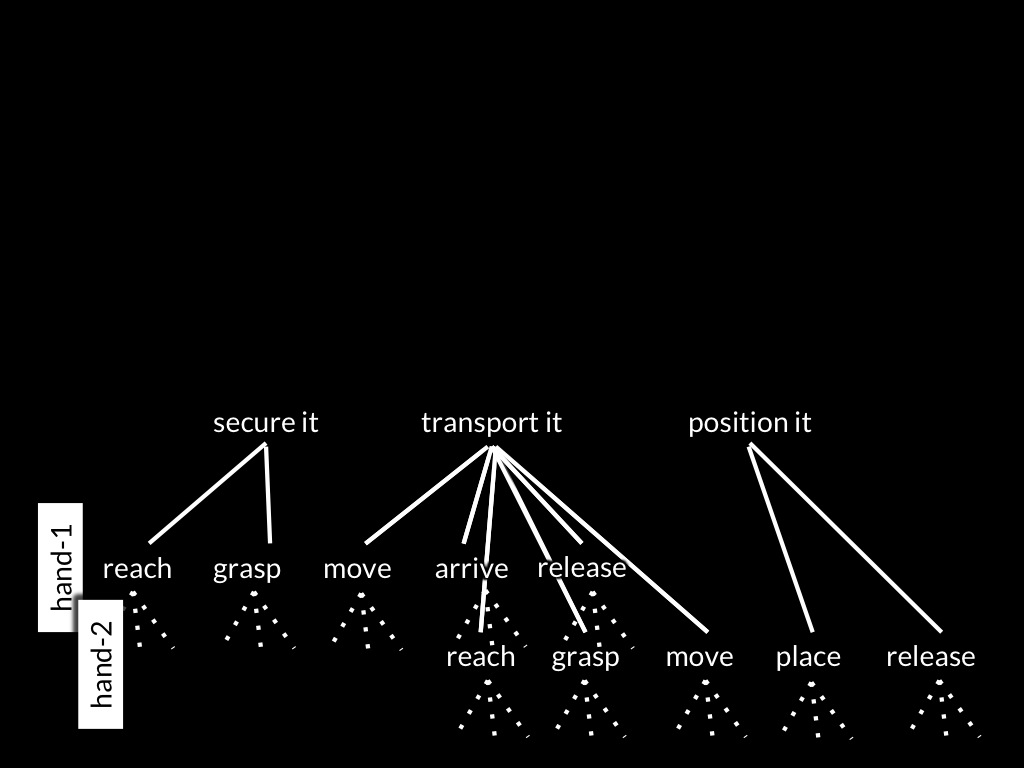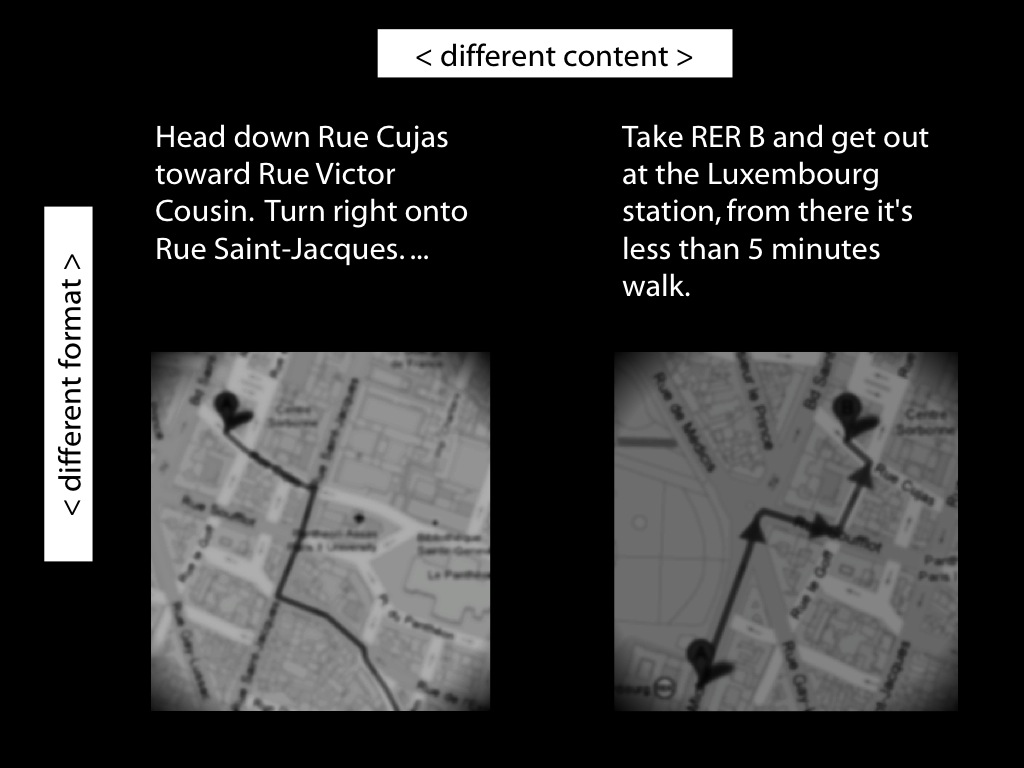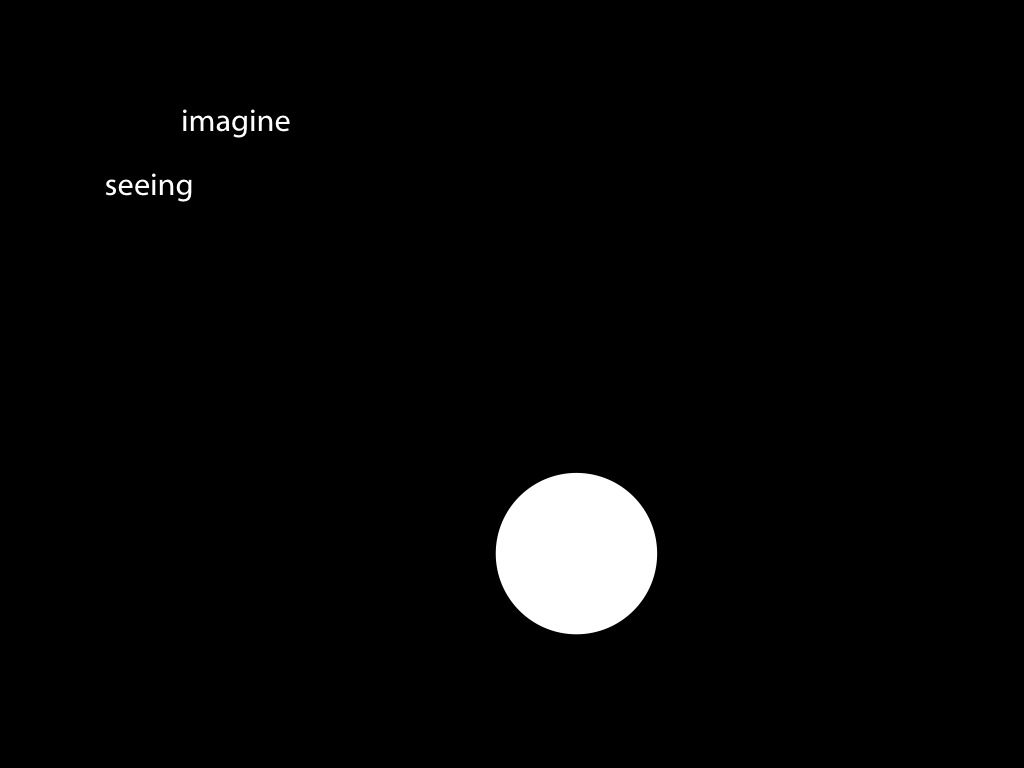Click here and press the right key for the next slide (or swipe left)
also ...
Press the left key to go backwards (or swipe right)
Press n to toggle whether notes are shown (or add '?notes' to the url before the #)
Press m or double tap to slide thumbnails (menu)
Press ? at any time to show the keyboard shortcuts

05: What Is the Mark That Distinguishes Actions?
[email protected]
Q1
Donald Davidson asks, ‘What is the mark that distinguishes ... actions?’ Are scientific discoveries relevant to answering this question?
Q2
What is the mark that distinguishes actions?
Q3
How are non-accidental matches between intentions and motor representations possible?
philosophical
methods
informal observation,
guesswork (‘intuition’),
imagination (including for ‘thought experiments’),
reasoning and argument,
& pursuit of theoretical elegance





Functions of Ben’s model of minds and actions:
- ethical
- normative
- predictiveSecond, consider Ben’s concern with making predictions.
--- speed vs accuracy
Whenever you are making predictions about anything at all, you face a \textbf{trade-off between accuracy and speed}. Making more accurate predictions requires considering more information and integrating it in a more complex model of minds and actions. By contrast, making faster predictions requires narrowing the information you consider and using a less complex model of minds and actions. Since Ben often has to make predictions fast enough to actually coordinate his actions with Ayesha’s, and since making predictions consumes scarce cognitive resources, Ben is usually needs to trade accuracy for speed.So Ben’s model of minds and actions is not built for accuracy.
speed vs accuracy

Henmon (1911, table 2)
‘the wrong judgments are in general shorter’


Functions of Ben’s model of minds and actions:
- ethical
- normative
- predictive
--- speed vs accuracy
Relying on philosophers to characterise actions
would be like
relying on Aristotelians to characterise physical objects.
Looking ahead ...
Godfrey-Smith contrasts models with theories,
and suggests that philosophers are often
best seen as constructing models rather than theories.
Q1
Donald Davidson asks, ‘What is the mark that distinguishes ... actions?’ Are scientific discoveries relevant to answering this question?
Q2
What is the mark that distinguishes actions?
Q3
How are non-accidental matches between intentions and motor representations possible?


What is the relation between a purposive action and the outcome or outcomes to which it is directed?



some
motor representations (/schema) represent ???outcomes = goals
‘a given motor act may change ... as a function of what motor act will follow it—a sign of planning’
Cohen & Rosenbaum 2004, p. 294




How do we know that outcomes are represented motorically?
Aside: The Double Life of Motor Representations
‘word listening produces a phoneme specific activation of speech motor centres’ \citep{Fadiga:2002kl}
‘Phonemes that require in production a strong activation of tongue muscles, automatically produce, when heard, an activation of the listener's motor centres controlling tongue muscles.’ \citep{Fadiga:2002kl}
‘Phonemes that require in production a strong activation of tongue muscles, automatically produce, when heard, an activation of the listener’s motor centres controlling tongue muscles.’
Fadiga et al (2002)
birra / berro (pseudo-word) / baffo

Fadiga et al 2002, figure 2
How do we know that outcomes are represented motorically?
first illustration: same kinematics, different goal
glossary: MEP


Villiger et al, 2010 figure 1AB

Villiger et al, 2010 figure 2
first illustration: same kinematics, different goal
second illustration: different kinematics, same goal

Umiltà et al, 2008 figure 1

Cattaneo et al, 2010 figure 1

Cattaneo et al, 2010 figure 3

Cattaneo et al, 2010 figure 4

Markers of motor representation ...
1. are unaffected by variations in kinematic features but not goals
2. are affected by variations in goals but not kinematic features
So: 3. carry information about goals (from 1,2)
Also
4. Information about outcomes guides planning-like processes ...




Markers of motor representation ...
1. are unaffected by variations in kinematic features but not goals
2. are affected by variations in goals but not kinematic features
So:
3. carry information about goals (from 1,2)
Also
4. Information about outcomes guides planning-like processes.

What is the relation between a purposive action and the outcome or outcomes to which it is directed?

intention = motor representation? No!
Q1
Donald Davidson asks, ‘What is the mark that distinguishes ... actions?’ Are scientific discoveries relevant to answering this question?
Q2
What is the mark that distinguishes actions?
Q3
How are non-accidental matches between intentions and motor representations possible?
appendix

Motor Representations Aren’t Intentions










Only representations with a common format can be inferentially integrated.
Any two intentions can be inferentially integrated in practical reasoning.
My intention that I visit the ZiF is a propositional attitude.
Therefore:
No motor representations are propositional attitudes.
All intentions are propositional attitudes
No motor representations are intentions.